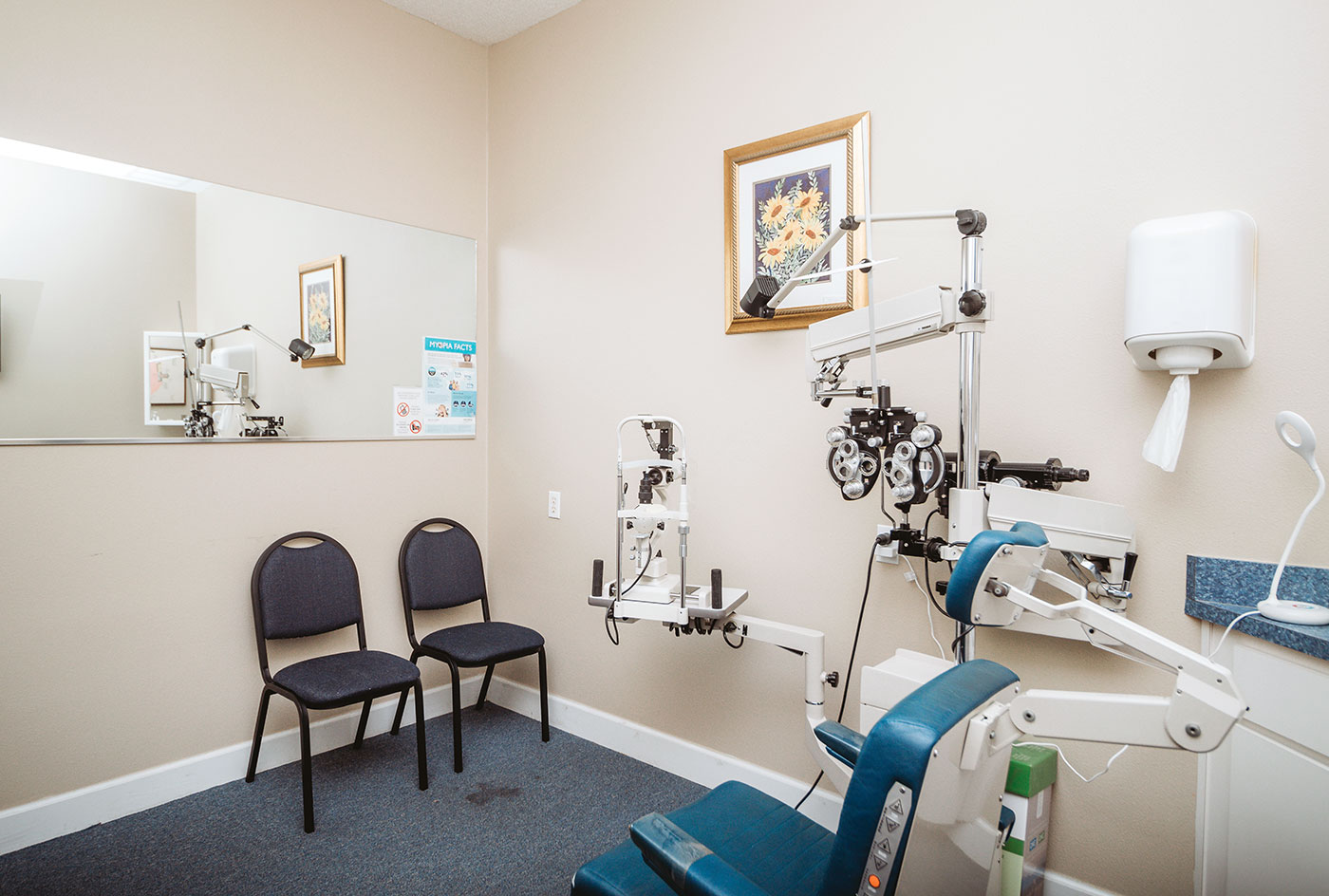Diagnosis & Management
Eye Disease

Diagnosis & Management
Eye Disease
At True Focus Eye Care, we use advanced diagnostic technology and treatment options to help manage and treat a wide range of eye diseases.
One benefit of getting regular eye exams with qualified optometrists is to prevent damage from eye diseases, often before any symptoms are noticeable to you. If an eye disease is diagnosed, our doctor can monitor it and when necessary, refer you to qualified specialists.
During your comprehensive eye exam, we can identify early signs of eye diseases, some of which have no obvious symptoms. Early detection of these eye diseases allows us to advise on steps to slow the progression of the disease or control the disease through lifestyle changes.
Your comprehensive eye exam will include a series of tests that will enable us to diagnose eye diseases. We will also ask you about your family eye health history, as some eye diseases have a genetic component. Here is a list of common eye diseases which we can diagnose and manage or co-manage, depending on the situation.
Dry eye disease
Dry eye disease is a common condition that occurs when the eyes do not produce enough tears or when the tears evaporate too quickly. It can cause discomfort, a gritty sensation, redness, and blurred vision.
Dry eye disease can significantly impact daily life, making it difficult to perform tasks that require visual concentration, such as reading or working on a computer. It can also affect overall quality of life, causing frustration and discomfort.
At True Focus Eye Care, we can pinpoint the underlying cause of your dry eye disease and recommend the best treatment to relieve discomfort.
Diabetic eye disease
Diabetic eye disease is a complication of diabetes that affects the blood vessels in the retina. It is a common cause of visual impairment and blindness among people with diabetes. Symptoms of diabetic eye disease include blurred or distorted vision, floaters, and difficulty seeing in low-light conditions.
There are different types of diabetic eye disease, including diabetic retinopathy and diabetic macular edema. Diabetic retinopathy occurs when high blood sugar levels damage the blood vessels in the retina, leading to abnormal blood vessel growth or leakage. Diabetic macular edema occurs when fluid builds up in the macula, the central part of the retina that is responsible for sharp, detailed vision.
Glaucoma
Glaucoma is a group of eye disorders leading to progressive damage to the optic nerve and is characterized by loss of nerve tissue resulting in loss of vision. The optic nerve transmits visual signals from the retina to the brain through a bundle of about one million nerve fibers.
Primary open-angle glaucoma, the most common form of glaucoma, is associated with increased fluid pressure within the eye. This heightened pressure can lead to gradual damage to the optic nerve and loss of nerve fibers, ultimately resulting in vision loss. In advanced stages, glaucoma can even lead to blindness.
Not everyone with high eye pressure will develop glaucoma, and many people with normal eye pressure can still develop this condition. Glaucoma occurs when the pressure inside the eye exceeds what the optic nerve can handle, regardless of the specific pressure measurement.
Macular degeneration
Age-related macular degeneration (AMD) is a common eye condition that typically affects people over the age of 50. It is a progressive disease that affects the macula, which is the part of your retina that processes clear straight-ahead vision. Symptoms of AMD include blurred or distorted vision, difficulty seeing in low-light conditions, and a blind spot in the center of your vision.
There are two types of AMD: dry and wet. The dry form is more common and progresses slowly, while the wet form is less common but progresses rapidly and can lead to severe vision loss.
The exact cause of AMD is unknown, but several risk factors have been identified. These include smoking, genetics, high blood pressure, and a diet lacking certain vitamins and minerals.
Computer vision syndrome
Computer vision syndrome (CVS) is a common eye condition that affects people who spend prolonged periods working on digital devices.
Symptoms of CVS include eye strain, headaches, blurred vision, dry eyes, and neck and shoulder pain. These symptoms are caused by the blue light emitted by digital screens, which can disrupt the natural sleep-wake cycle and cause eye fatigue and strain.
At True Focus Eye Care, our eye doctor can provide tips on preventing CVS and reducing eye strain associated with digital device use. We also offer specialized lenses that filter out blue light and reduce eye strain for those who spend significant amounts of time in front of digital screens.
If you’re experiencing changes in your vision or it’s been a while since your last exam, contact us to schedule an appointment at our office in Port Richey.
